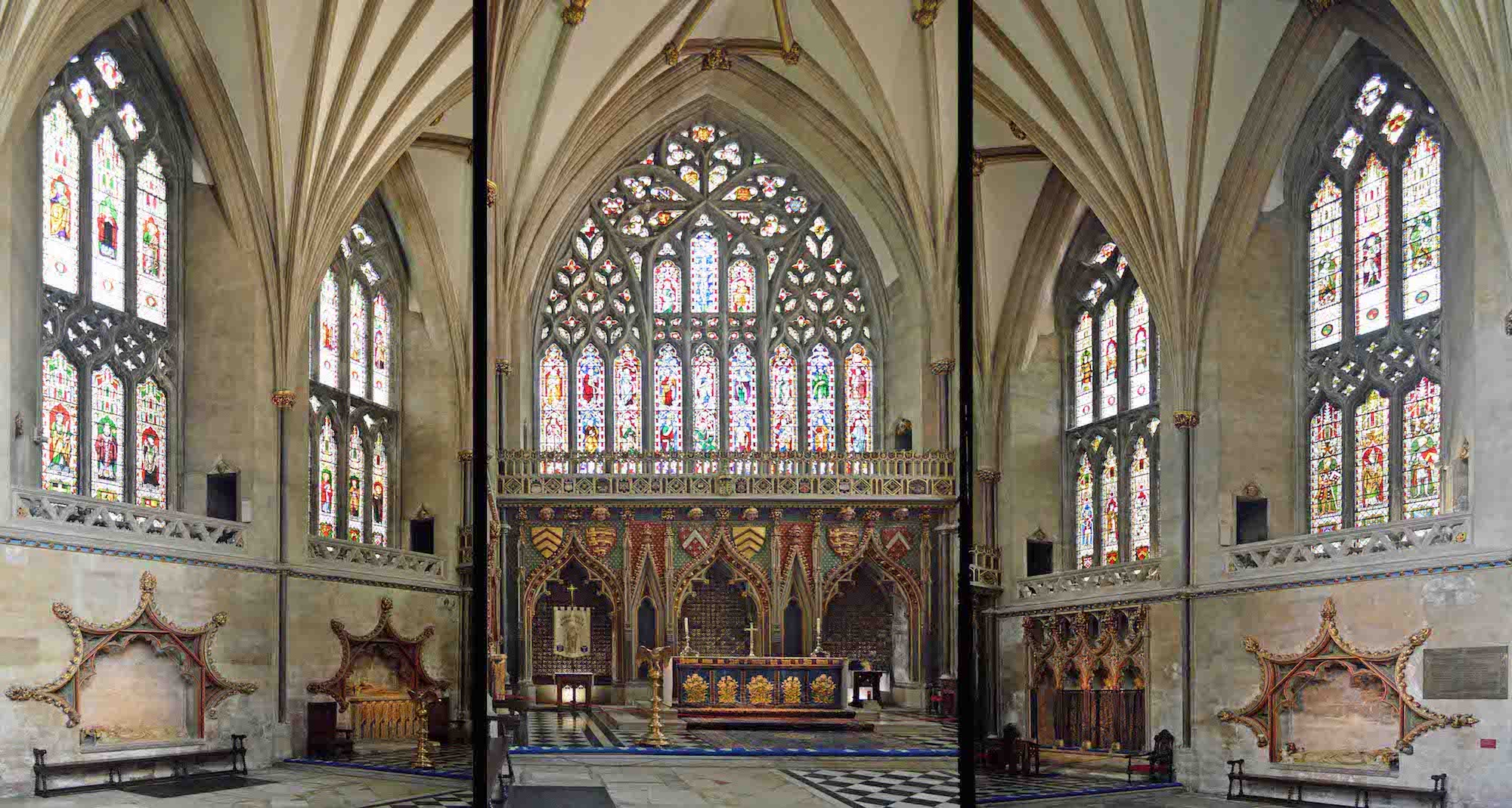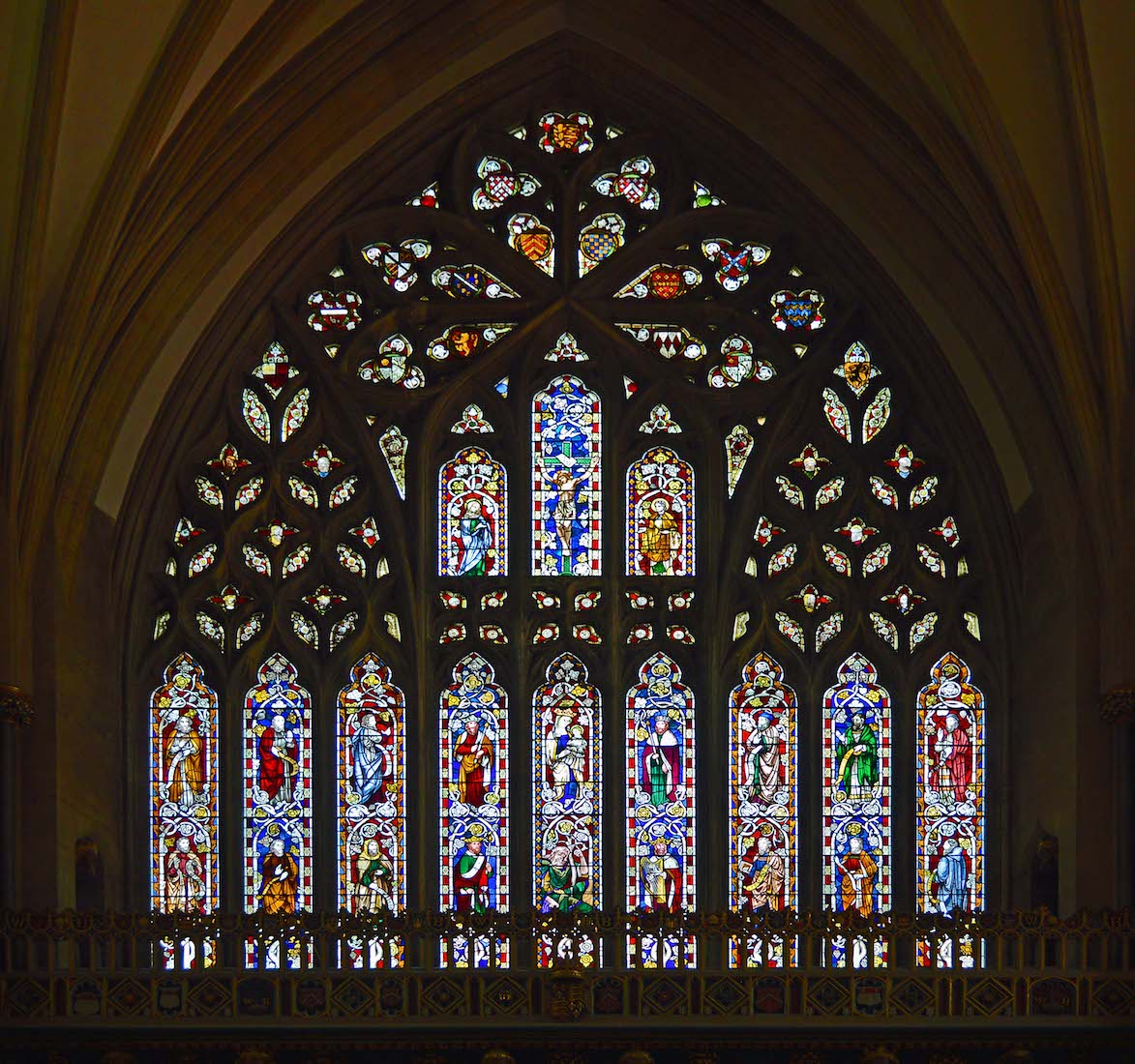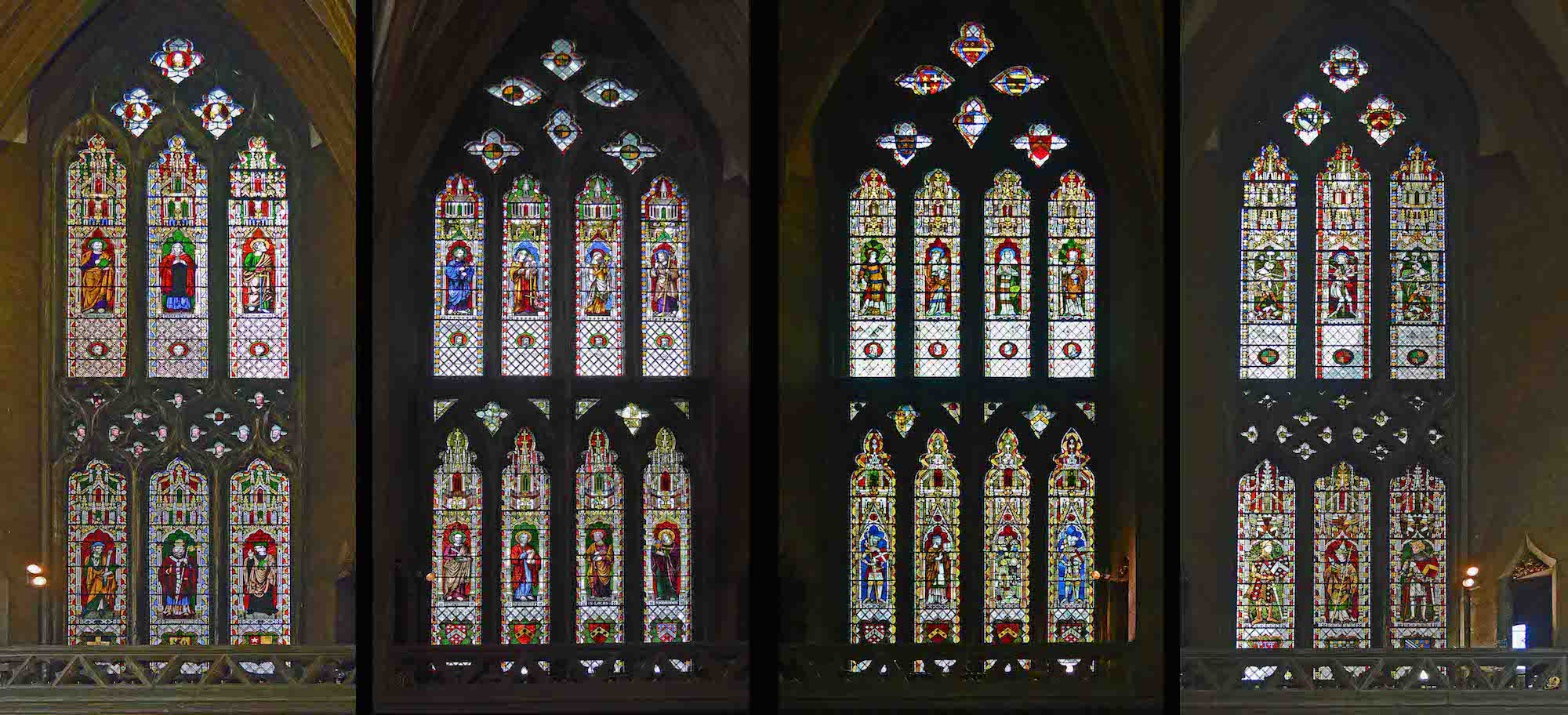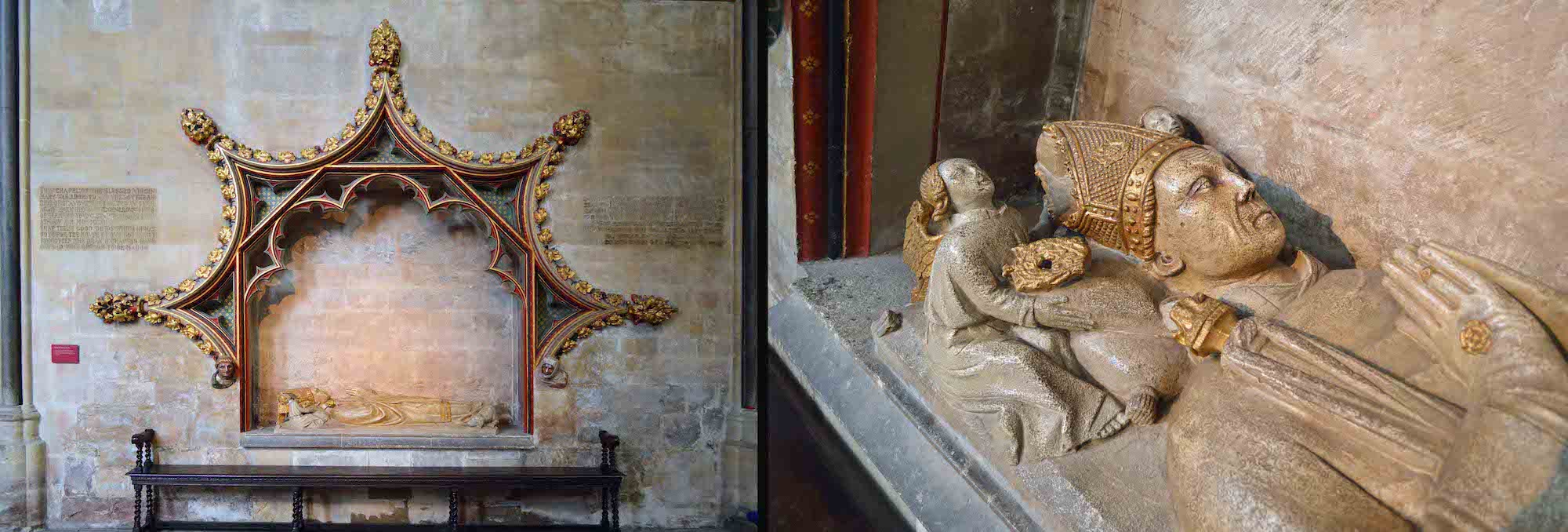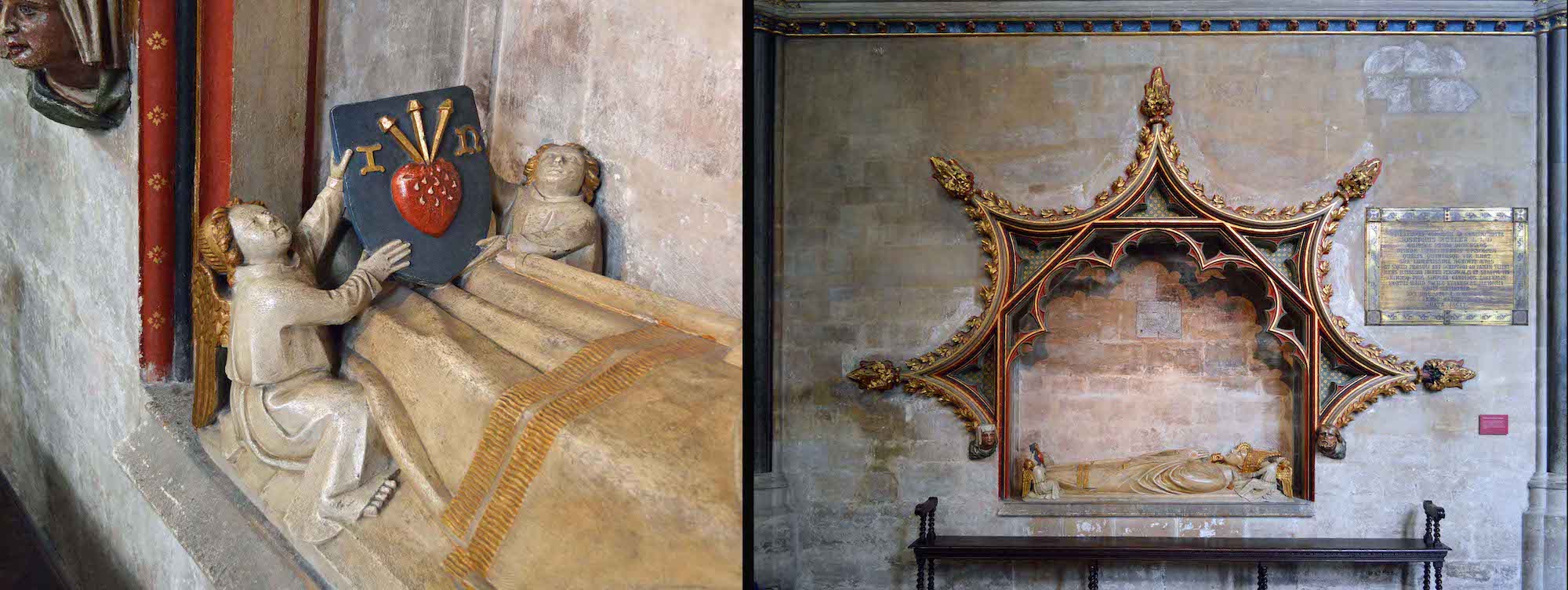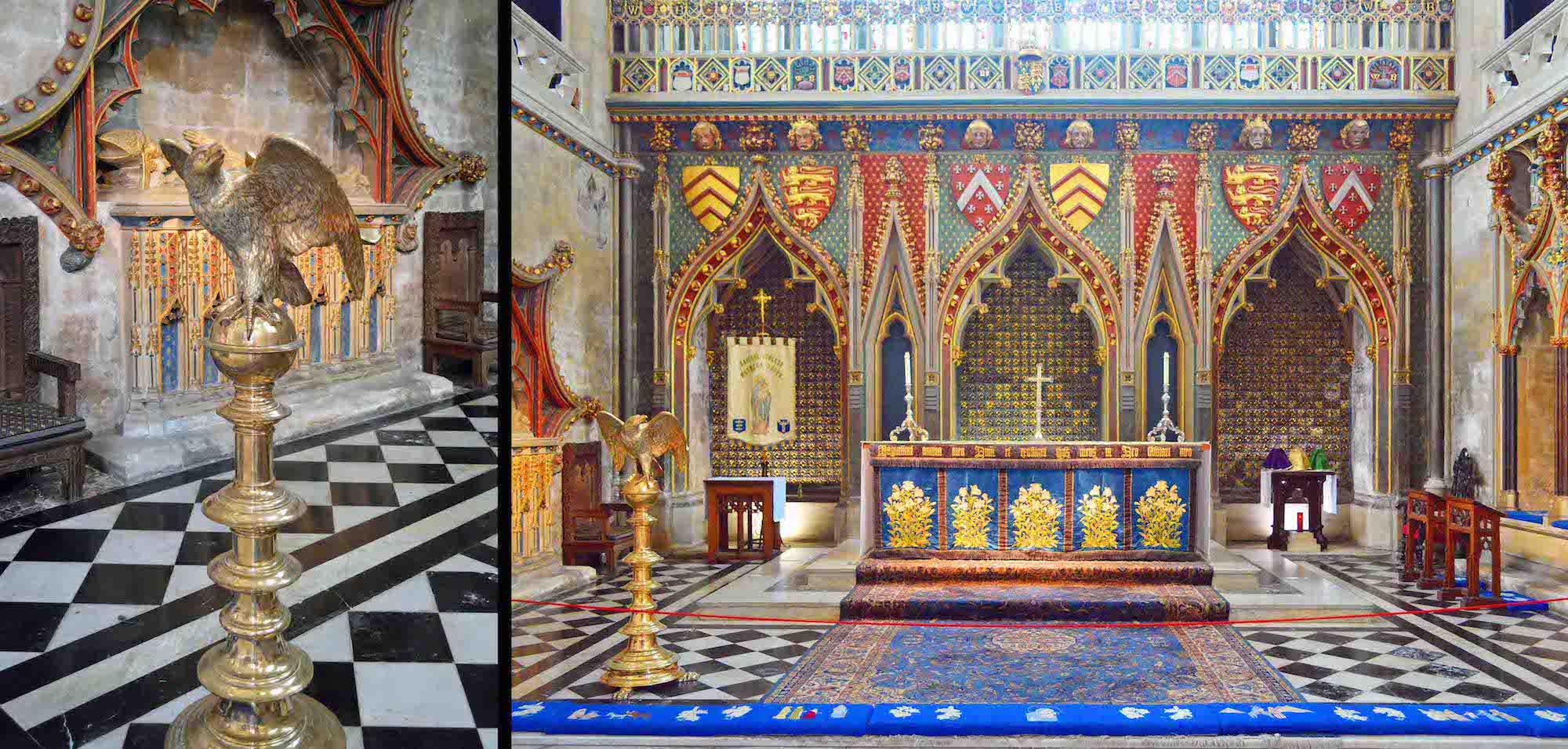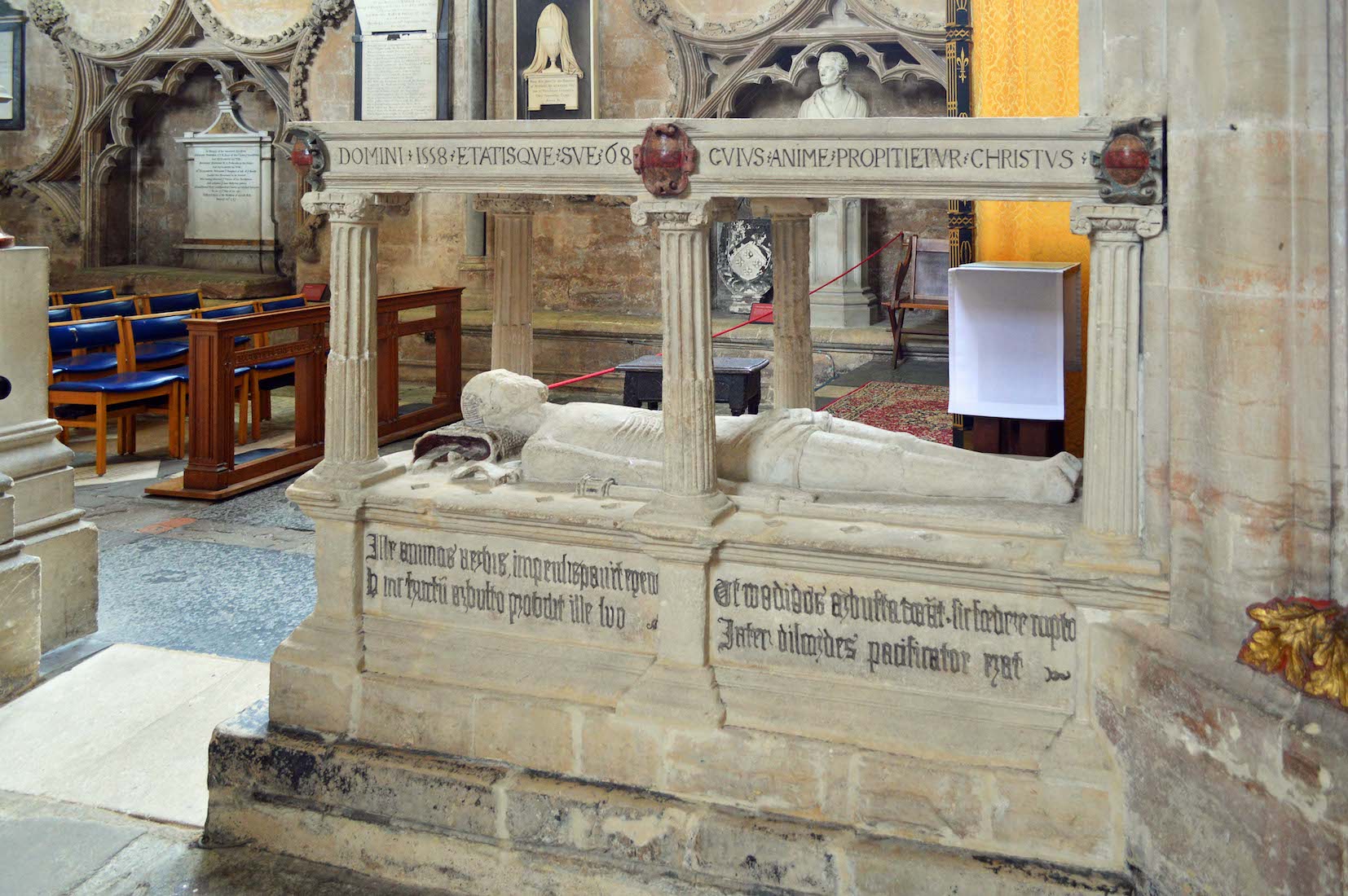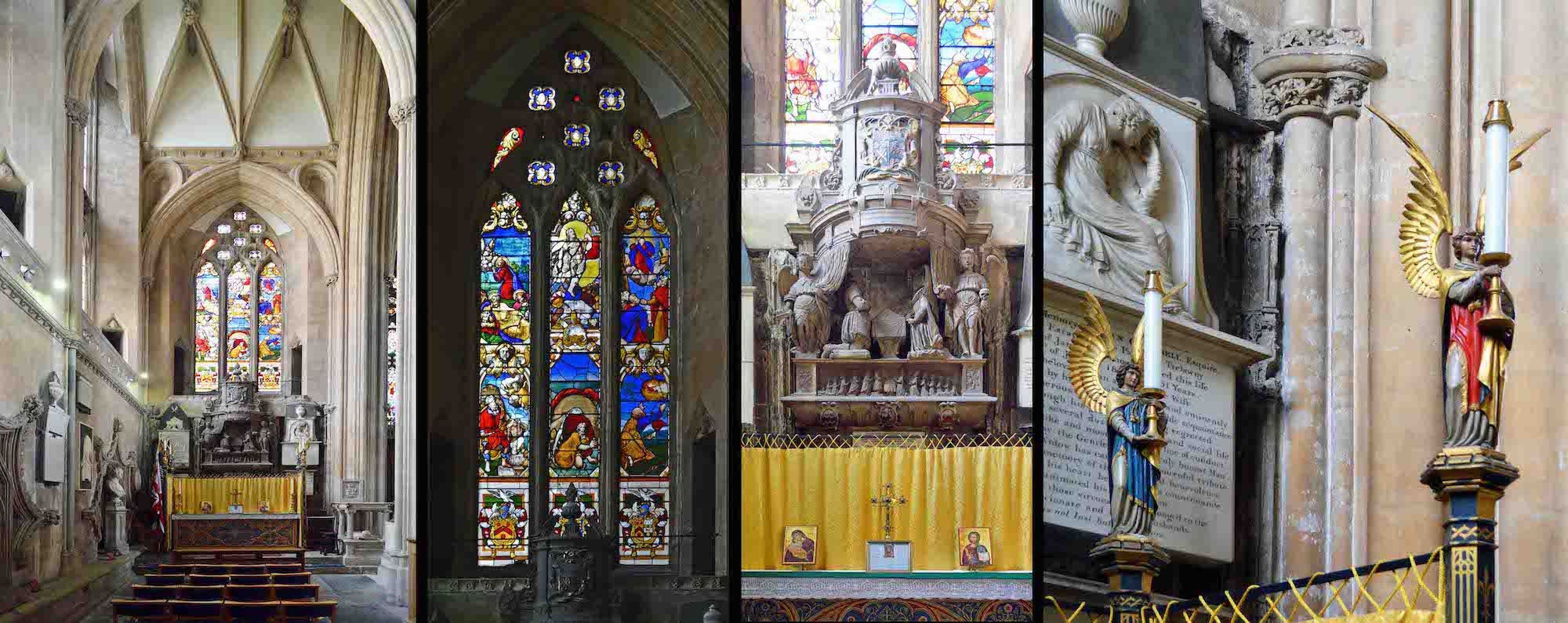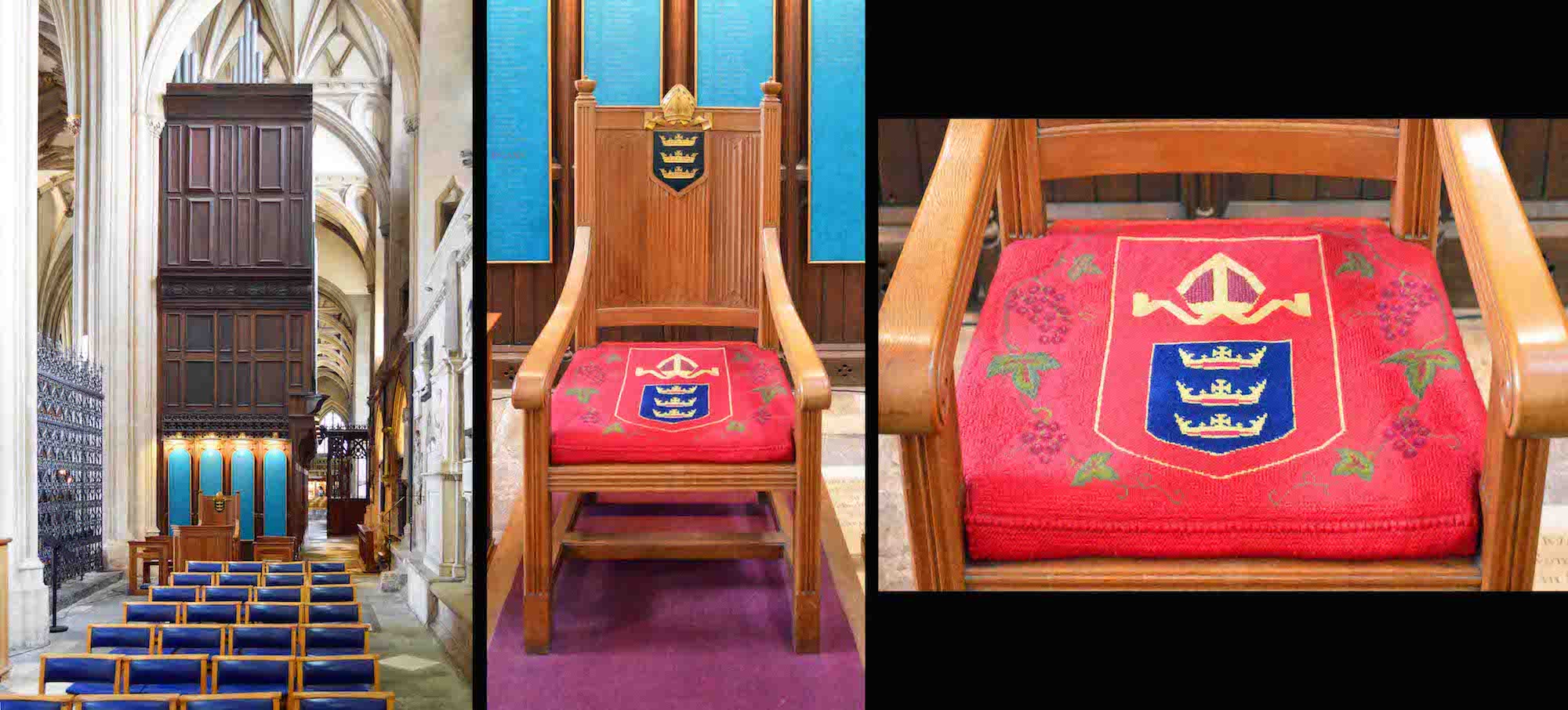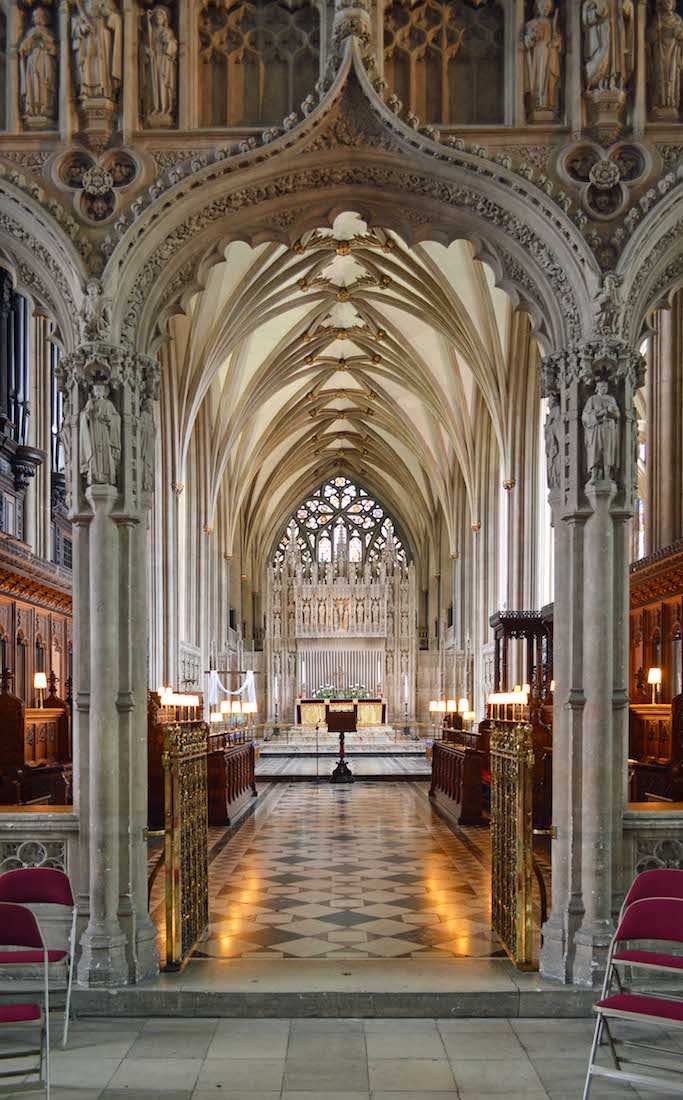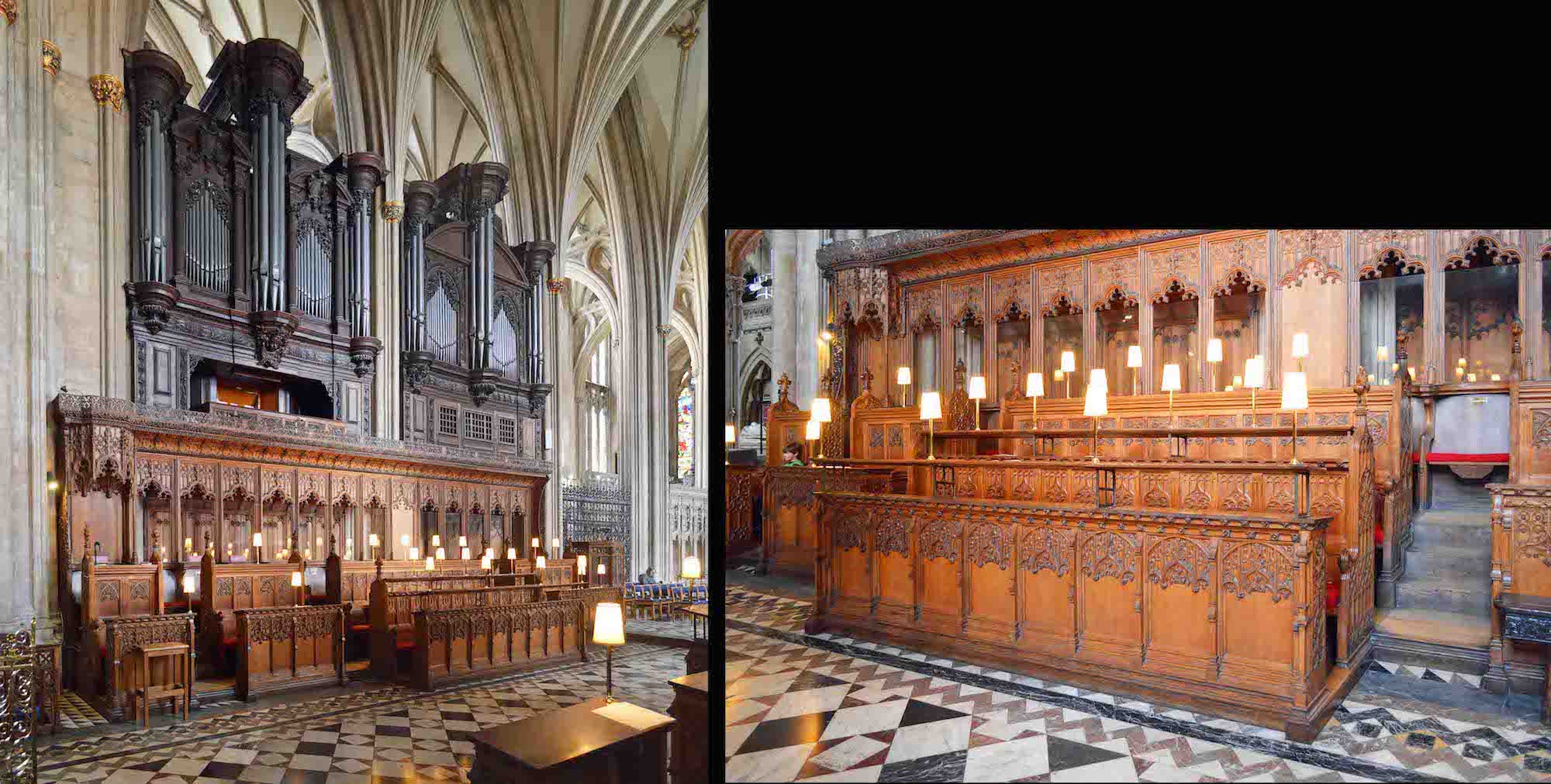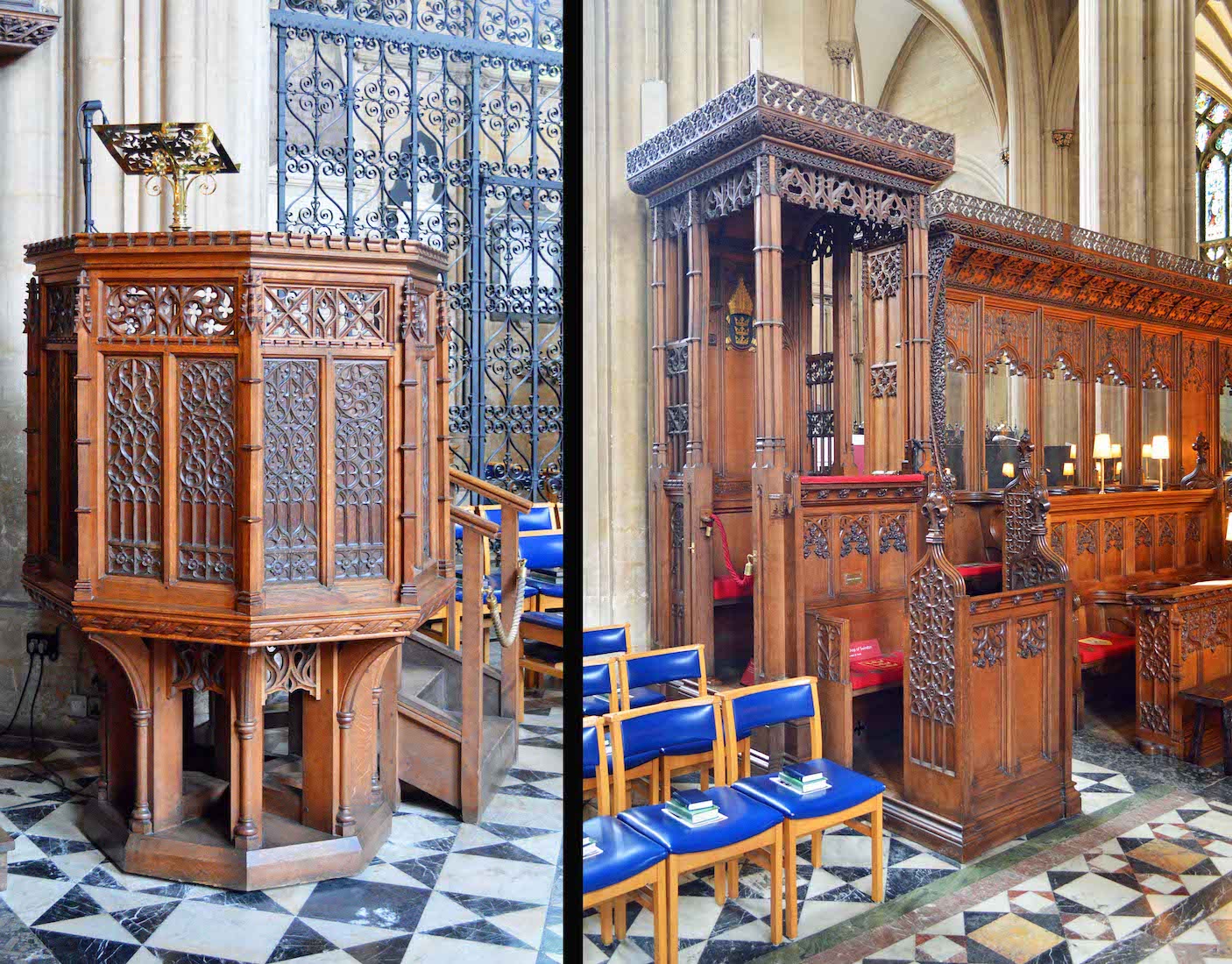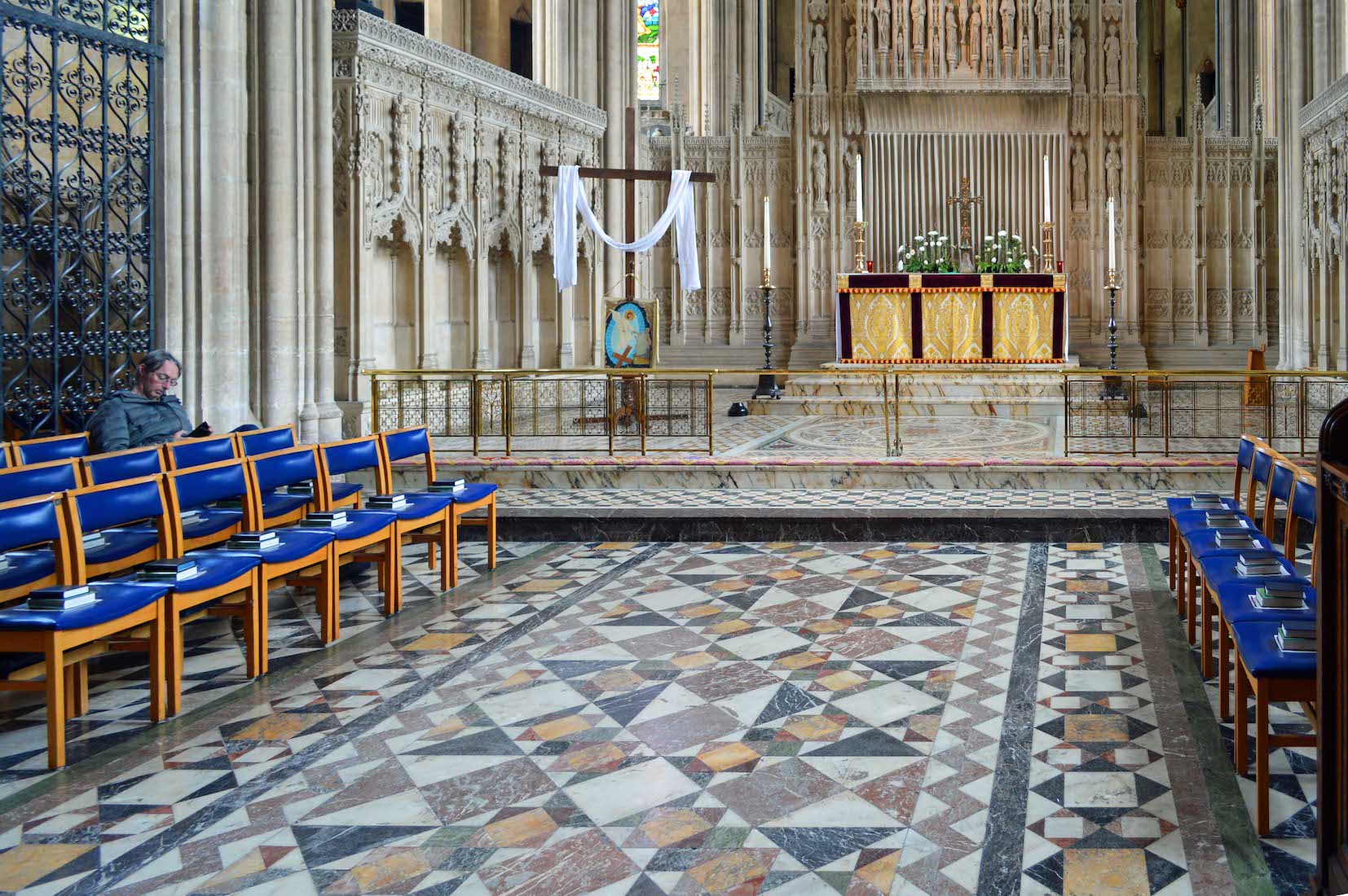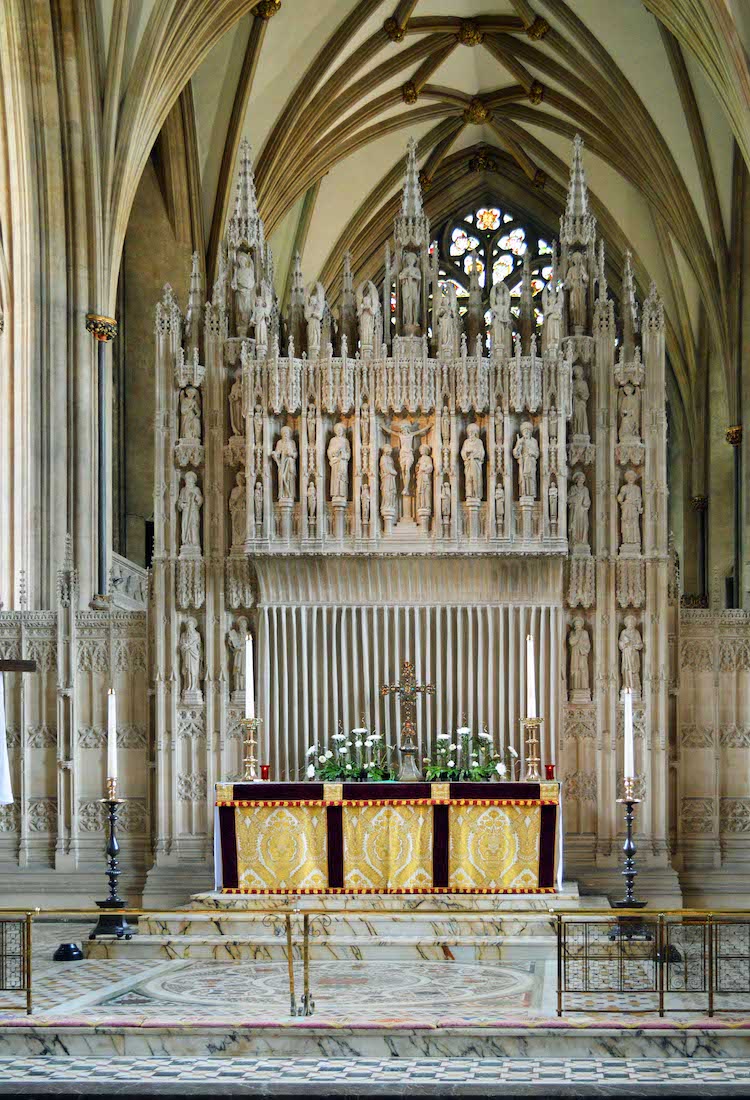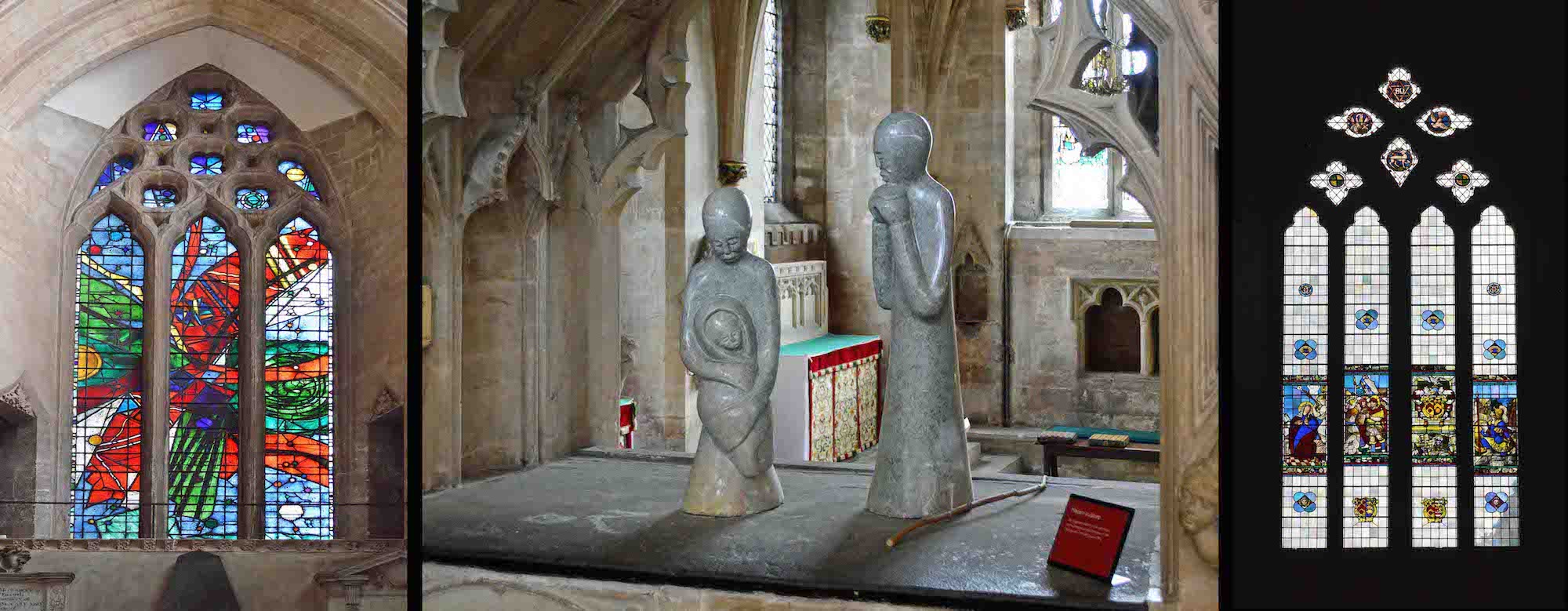
At left is a stained glass window created by Keith New in 1965, depicting the outpouring of the Holy Spirit at Pentecost in an arresting abstract form. At centre, and looking through to the Berkeley Chapel is a soapstone sculpture of the Madonna and Child with Joseph (1996). It is by the Zimbabwean artist Chinyama. The window at right, constructed of medieval fragments, gives light from the Southern wall. PLAN
62. TO THE EAST LADY CHAPEL
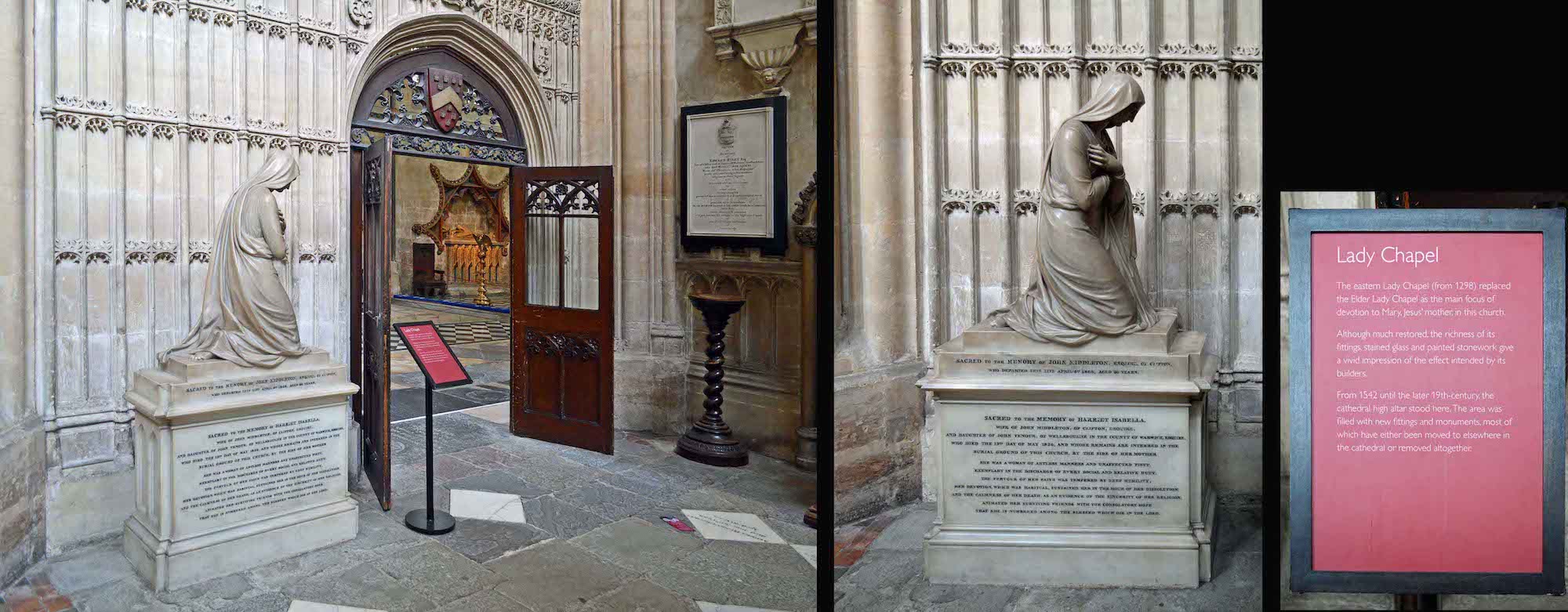
From the choir aisle we move to enter the East Lady Chapel. On our right is a plaque in memory of Edward Riley, and to our left a beautiful statue, presumably of Harriet Isabella Middleton – the perfect wife of John Middleton, Esq.
64. EASTERN LADY CHAPEL WINDOW
The East window has been restored but contains a spectacular display of heraldry in fourteenth-century stained glass, including the arms of Lord Berkeley. Below the central Crucifixion scene are eighteen unidentified Bible characters, including King David and Mary with the child Jesus.
65. EASTERN LADY CHAPEL SIDE WINDOWS
As we stand looking at the altar, these are the four side windows from left to right. There are 24 figures depicted here. Most have no identification but we can pick out the Four Evangelists who are named, the Virgin Mary with the baby Jesus, Elizabetha(?), and St George.
66. STAR NICHES
The star shaped niches in the walls contain tombs. This is the tomb of Bishop Paul Bush, the first Bishop of Bristol.
67. ABBOTS
TThree medieval abbots are buried in the other star shaped niches; Walter Newbury, William Hunt and here, John Newland. Abbot John Newland (abbot 1481-1515) was one of the greatest of the medieval abbots. He was known as ‘Nailheart’ from his rebus or symbol of a bleeding heart pierced by three nails, and this emblem can be seen here and in various parts of the abbey.
68. CHAPEL LECTERN, ALTAR
What a magnificent altar and reredos! The arms of Lord Berkeley (white chevron on red background) can be seen on the reredos, along with the badges of the Clare family and the Royal Arms of England. The two candlesticks were given in 1712 in thanks for the safe return of the ships ‘The Duke’ and ‘The Duchess’ which had sailed from Bristol and voyaged around the world.
69. THROUGH TO THE NORTH CHOIR AISLE
We leave the Eastern Lady Chapel and move to the North choir aisle. On our right is the tomb and effigy of Bishop Paul Bush (d. 1558).
70. NORTH CHOIR AISLE, EAST END
The East window of the North choir aisle is of fragmented glass, but illustrates Jesus in the garden, Jesus leaving the tomb, the risen glorified Christ, Abraham and Isaac, Jonah in the whale, the translation of Elijah. Below is the elaborate Codrington monument. This remembers Robert Codrington and also shows his wife and many of their 17 children. Codrington (1869 – 1908) was the colonial administrator of what is present-day Zambia.
71. CODRINGTON KNEELER
I am unsure why there should be a kneeler in front of the Codrington monument, but this long kneeler has a definite maritime theme.
72. NORTH CHOIR AISLE AND CATHEDRA
The Western end of the North choir aisle is largely taken up with the workings of the organ. A cathedra stands at the closer end. This is the Bishop’s chair. The Latin name for chair or throne is ‘cathedra’ and it is from here that the name ‘cathedral’ comes. The three crowns form the logo of the Bristol Diocese, signifying the kingship of the Trinity?
74. CHOIR STALLS AND ORGAN
The original Norman choir was re-built by Abbot Knowle in the fourteenth century, and the choir stalls were added by Abbot Elyot in the sixteenth century. The current stalls date from the nineteenth century but incorporate some of the fine sixteenth century carving. The organ dates back to 1685, and was made by the famous Renatus Harris. Much modernisation has taken place since then. The present organ has 60 stops and four manuals.
75. MISERICORDS
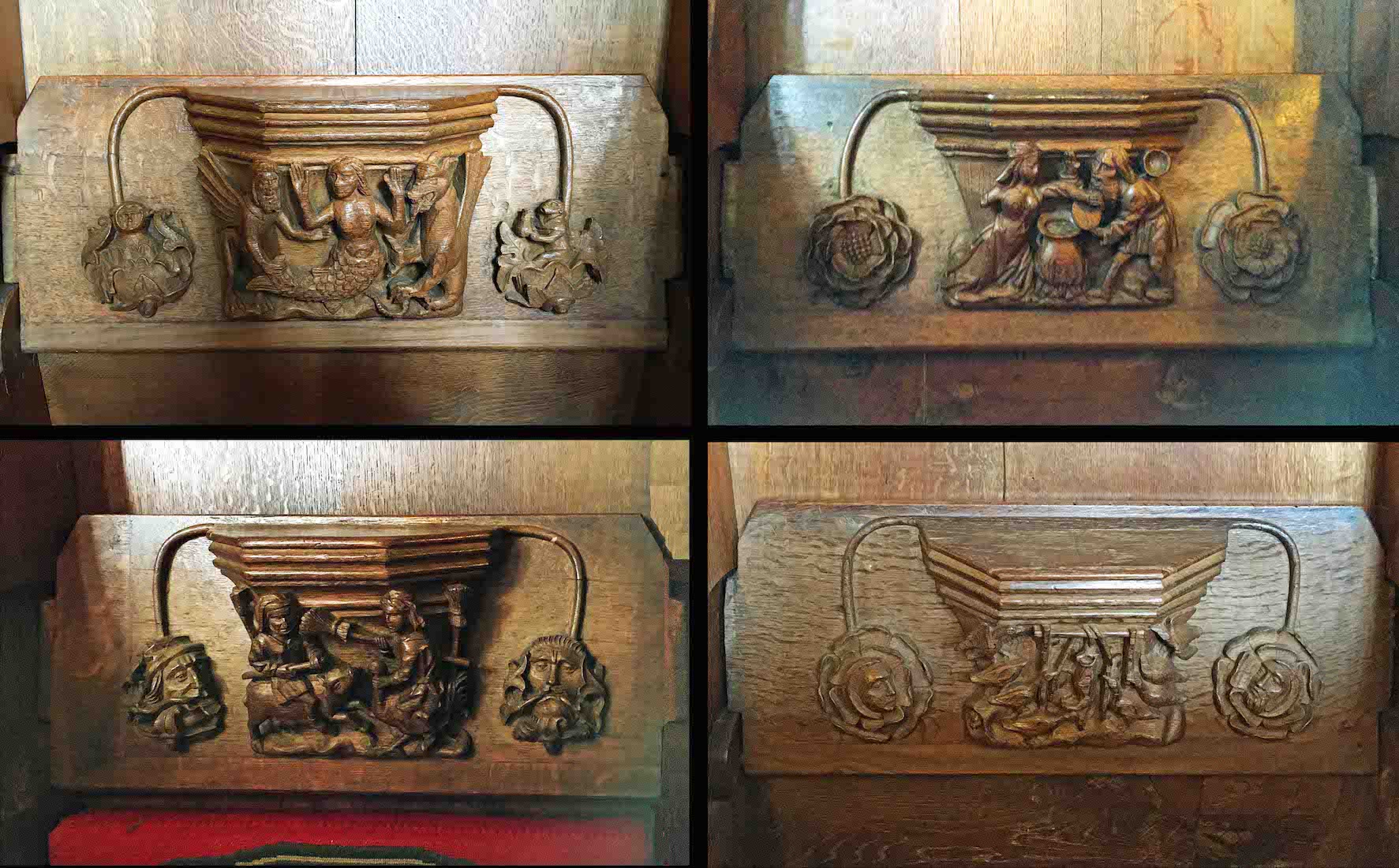
The misericords are located on the underside of the seats in the choir, and were originally used by the monks of the abbey. They were required to stand all the way through their long services, so the misericords were used as supports. They derive their name from the Latin for ‘mercy’. The carvings include secular themes, including a mermaid, and scenes of bear-baiting and wrestling.
76. CHOIR PULPIT AND CATHEDRA
In the choir area is a carved pulpit and another cathedra. On the cathedra is a sign reading ‘Bishop of Swindon’. The Bishop of Swindon is an episcopal title used by a suffragan bishop of the Church of England Diocese of Bristol, in the Province of Canterbury, England – an ‘assistant bishop’.
78. ITEMS NEAR THE HIGH ALTAR
In front of the Cross is an icon of Christ standing on the Cross, performing some kind of rescue. In front of the high altar is a wonderful circular mosaic with a ring of eight decorated disks. To the right is a wall panel of five decorated arches, each containing a cushioned seat.
79. HIGH ALTAR AND REREDOS
The nave altar is the one in regular use, but the high altar is still used on special occasions. On the altar stands a very ornate cross and two candlesticks. The high altar stands in the grand setting of the choir, with its dramatic stone reredos, designed by J.L. Pearson in 1907.
80. REREDOS
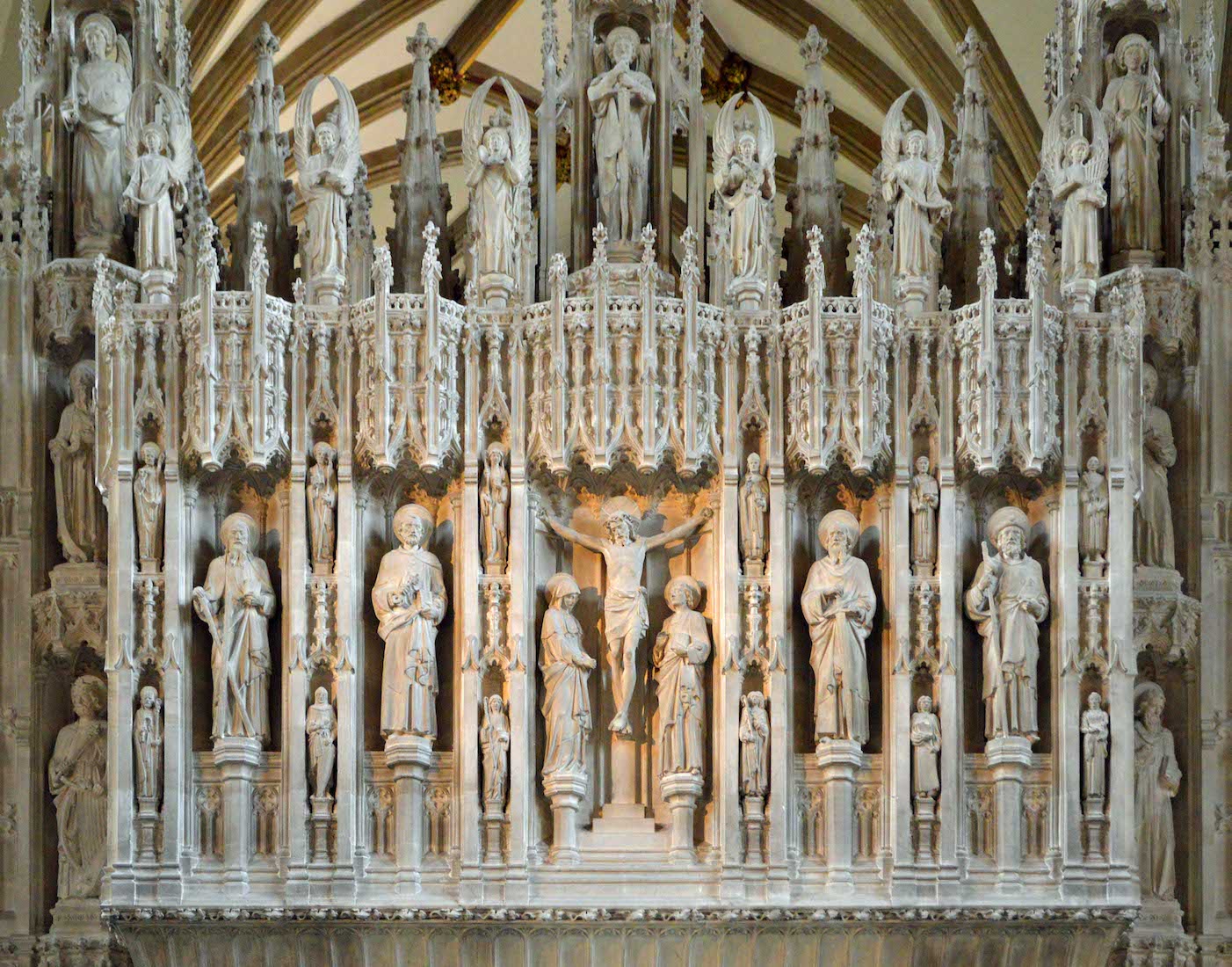
In the lower centre of the reredos is a Crucifixion image. Six angels stand across the top, with archangel St Michael in the centre. In the lower row, we can pick St Andrew, St Peter, St Paul, and one other.


